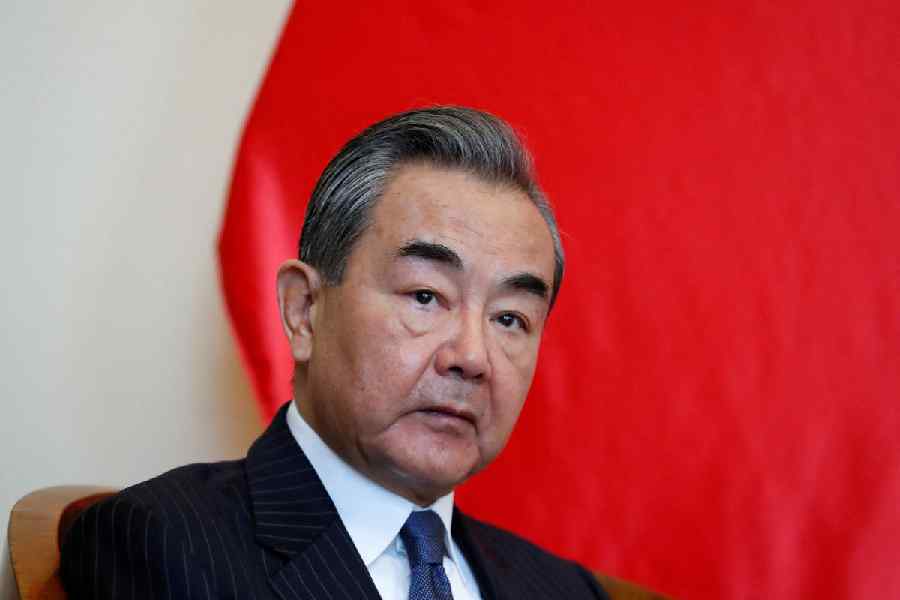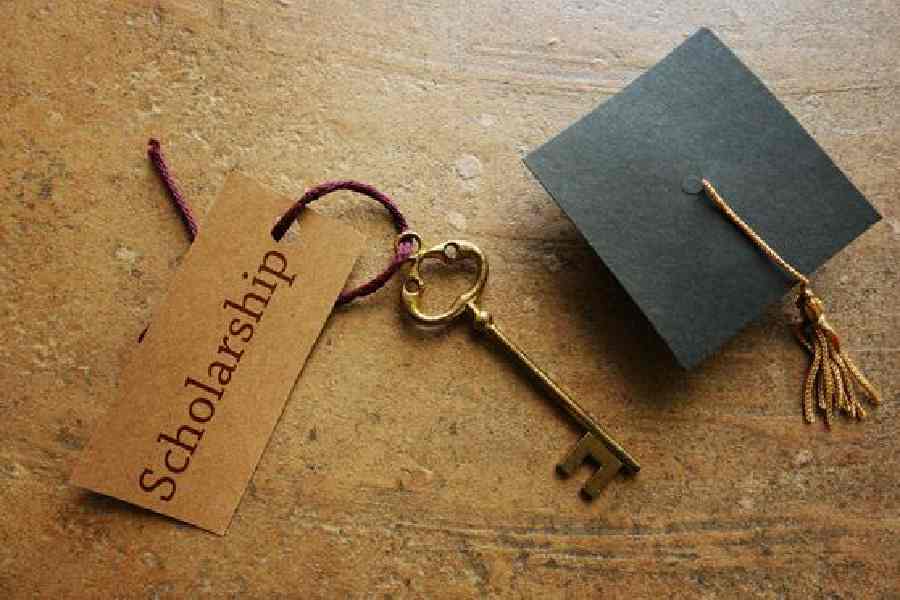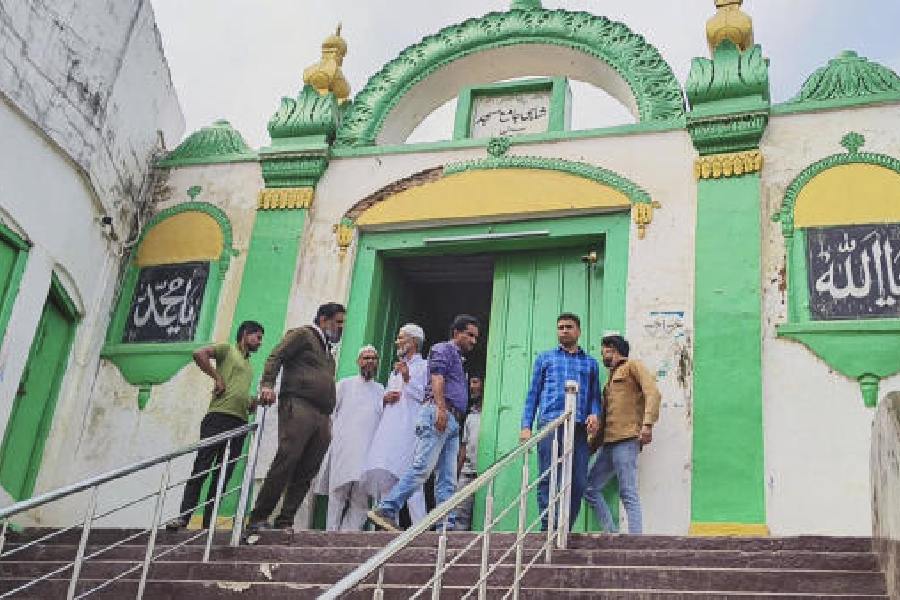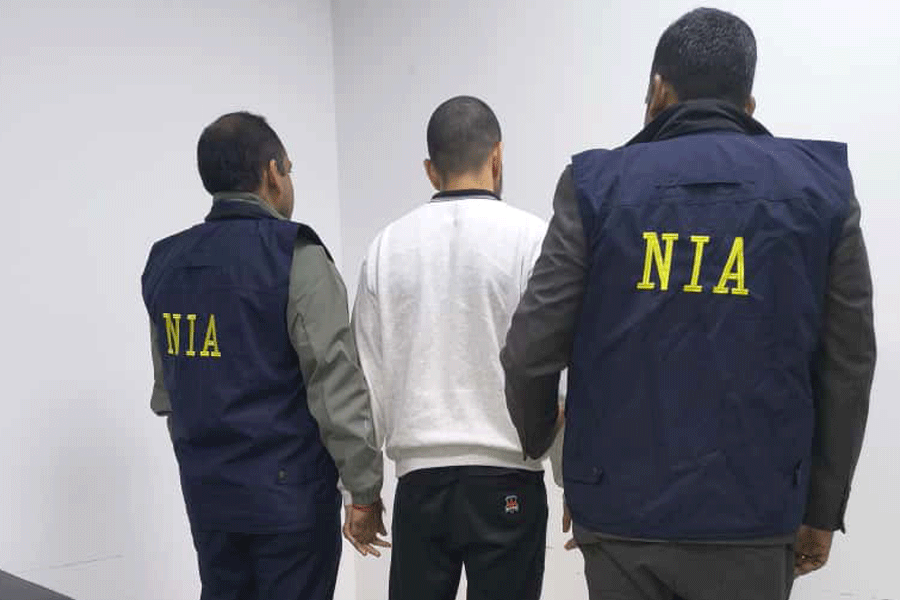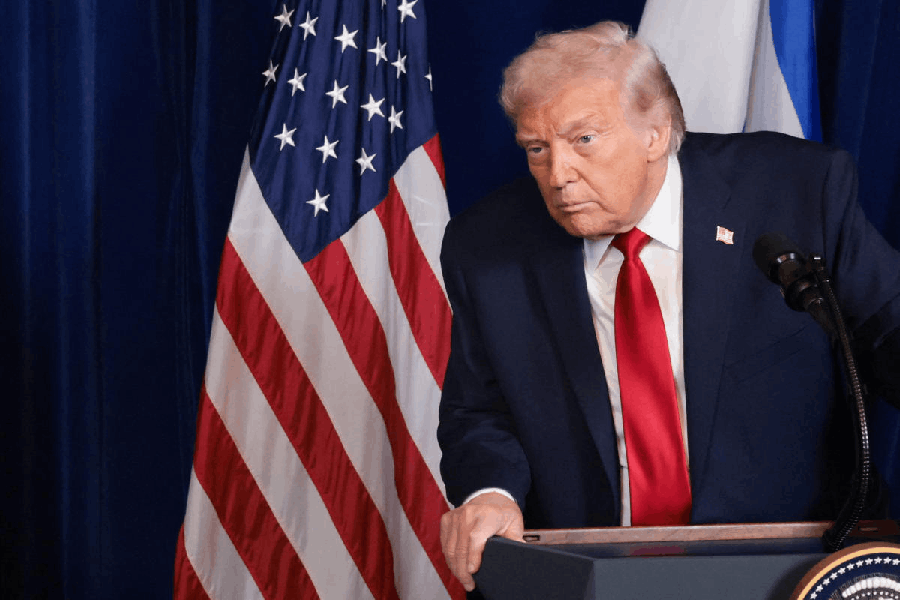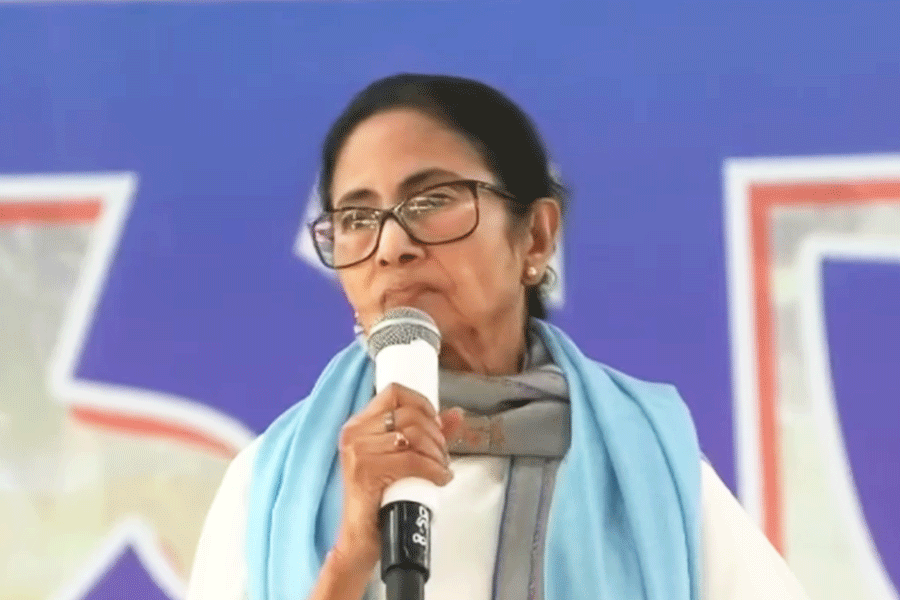The sitting Buddha atop a vihar just after the Santragachhi bridge gives the place a name, the Buddha stop. The Ma Mati Manush park, Chief Minister Mamata Banerjee's signature park in Howrah, also has two Buddha statues greeting commuters on Kona. The pristine white single-storey structure, the Buddha vihar, just a few metres from the Ma Mati Manush Park, hidden by an overgrowth of foliage and billboards, is the only testimony to the 30-strong household of Buddhists residing in Jagachha, Baksara, Sultanpur, Uluberia and nearby areas.
.jpg)

The Santragachhi Buddhist Welfare Association was established in 2011 as one among the 42 Buddha vihars in the plains of West Bengal. The aluminium framed glass panel doors open to a large marble prayer hall, which has a white fibre glass Buddha at the podium. Inside a flight of stairs takes one to the terrace where a larger, golden Buddha statue presides in a room. On the terrace of the single room sits another Buddha that can be spotted from afar. The Santragachhi station is nearby and the whistles of the trains pierce the peaceful meditation of the monks.

"When I was posted in the Mourigram terminal of Indian Oil Corporation and started living in the company quarters there, I started wondering why there was no Buddhist vihar in the South Eastern Railway area. I then came across the other Buddhists living in the area and soon floated the idea of building a Buddhist temple here," said Ananda Barua, a member of the advisory committee of the Santragachhi Buddhist Welfare Association.
Ananda, along with Pradip Barua, Makhan Barua and Shyamalendu Barua began a donation drive and started collecting money for the temple. "We arranged a religious programme and invited monks. There were about 250 devotees who gathered here. We initiated a donation drive. Soon after a committee was formed that would carry forward the task of building the vihar," said Shyamalendu. One of the main donors was Ananta Kumar Singh, a Santragachhi railway employee, who donated Rs 70,000. "There were other donors too, who gave Rs 10,000, Rs 5,000 or Rs 1000. Each donated according to his capacity," said Ananda.
The 3 cottah land on which the temple stands belonged to a local, Samir Nandy, who sold it to the association for Rs 2.5 lakh. "The land was actually acquired for the construction of the Kona Expressway. After the expressway was built the authorities gave back excess land. So Nandy got back a portion of his land which we bought," said Shyamalendu. Every weekend, the committee met and visited the nearby Buddhist households to collect money for the temple.
"Some donated in kind. Pratyush Gorui used to work in the Central Excise department and he got many of the suppliers of cement and iron rods to give us material at nominal rates. Samir Ray donated all the marble that is used in the temple. We also got a fund of Rs 4 lakh per annum for some years from the Central government's cultural department," said Ananda. A corpus fund of Rs 45,000 was given by the general secretary of Mahabodhi Society of India.
The Buddha idol was donated by the Society from its library. "We transported the fibre glass idol from Bodh Gaya in a Tata Sumo," said Shyamalendu. The bigger Buddha idol on the first floor was donated by Buddhapriya Mahadeo of Siddhartha Welfare Mission in Chinar Park. And the marble dust Buddha statue atop the terrace was made by Surojit Pathak of Viveknagar.
The association celebrates all Buddhist festivals including the Buddha Purnima, Ashar Purnima, Kathin Jibar, Poila Baisakh and also the birth anniversary of Baba Saheb Ambedkar. A black and white photograph of Ambedkar hangs on one of the walls of the prayer hall. "We are indebted to Baba Sahebji for popularising Buddhism," said Shyamalendu. The association also collected relief funds during Aila, conducts Self Help Group (SHG) training and donates to local ashrams.

.jpg)
